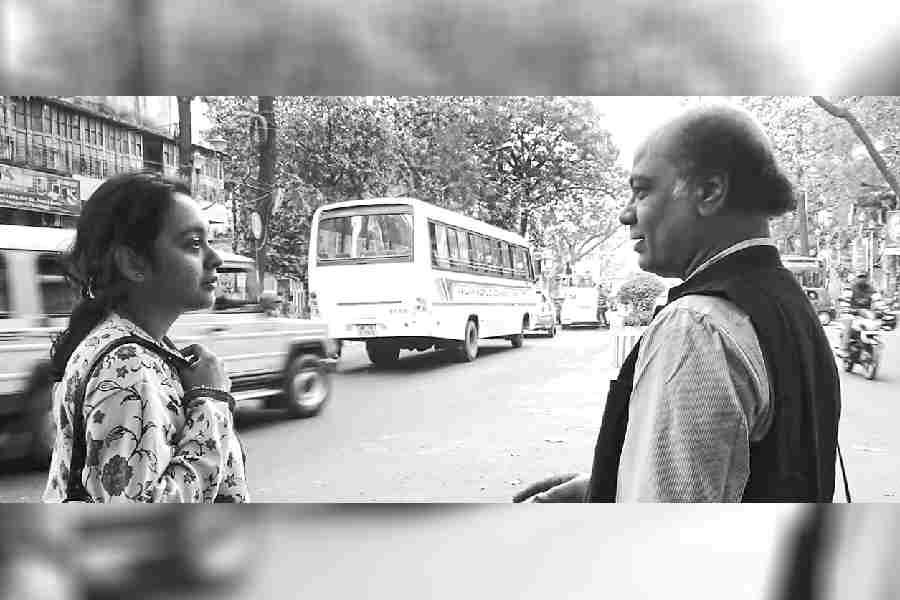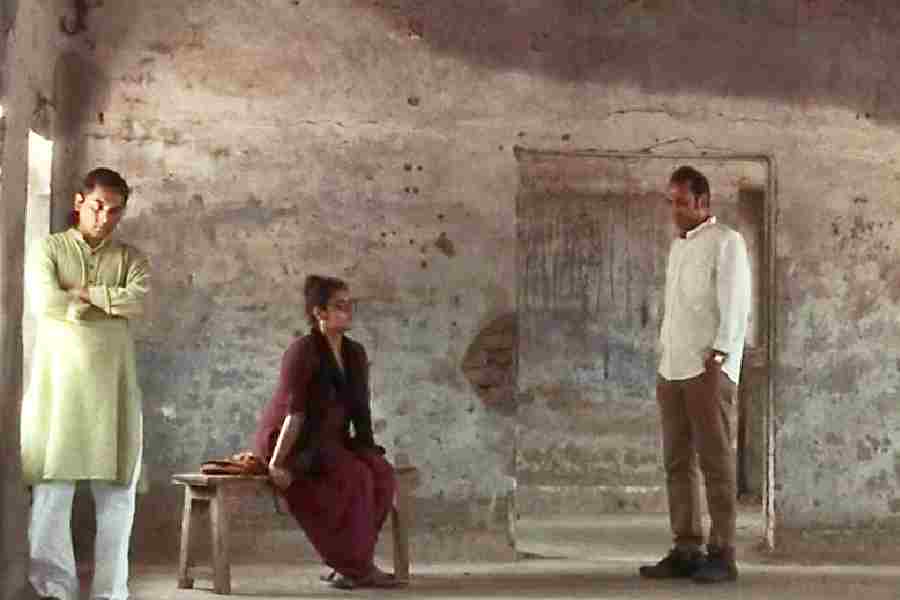A die-hard fan of commercial blockbusters all his life, it was a chance encounter with the arthouse genre that changed Amitabha Chaterji’s perspective on films. Such was its impact that he gave up a successful business venture to start making films of his own. His first full-length feature film won him an award at the International Film Festival of Kerala in 2018. To celebrate 75 years of the Film Society movement of India, the Federation of Film Societies of India selected his critically-acclaimed sophomore film Into The Mist for screening at Nandan on May 13. A candid chat with the independent young filmmaker who is driven by a constant urge to tell stories his own way.
How did you step into the world of filmmaking?
One phrase aptly sums up my journey — that cinema makes my life meaningful. My tryst with movies began very early on when I used to watch films almost daily. The three single-screen theatres in the middle-class neighbourhood of Hazra Road where I grew up ensured that I had easy access. I was so young that I would literally slip into the theatre without anyone noticing me. Besides, people at Basusree, Kalika and Ujjala knew my father and didn’t ask for money. I was audacious enough to watch the night show of Appu Raja (the 1989 blockbuster starring Kamal Haasan) all by myself when I was in Class V. Watching commercial movies at single screens had its own charm. The sheer enthusiasm of the crowd, the sound of coins being thrown at the screen, the rush to buy tickets at a premium from touts – I was in love with that world. Till 2008, all I did was watch Bollywood and other commercial fare. That year, a friend dragged me to watch Ingmar Bergman’s Wild Strawberries at a multiplex. The film was an eye-opener. It tweaked my lens. From commercial Bollywood films, I changed gears to watch world cinema.
I have always been a risk-taker. I set up my own IT company after giving up on engineering just before my final exams. Then Bergman toppled my apple cart so to say. I shut down my booming IT business and decided to devote my life to films. I spent hours watching world cinema at Seagull Arts and Media Resource Centre. Film schools never really appealed to me since I thought I needed to find my own language of cinema. The technical aspects, of course, have to be learnt. I decided to learn the craft by trying my hands at making short films. Looking back, those early experiments were quite shoddy. But they helped me find my own path.
What are your core ideas on filmmaking?
Minimalism is the crux of my filmmaking style, both in terms of aesthetics and technicality. I have been greatly inspired by the grand structure that Japanese director Yasujirō Ozu constructs in Tokyo Story and Late Spring even while being very minimal in his approach. I try to first look at the simplicity and minimalism of an experience. That leads me into the depth of the subject and leaves a profound impression. Minimalism impacts both my content and form. That is also why I work with a skeletal crew. No frills are needed to create an island of isolation when I am shooting. My method doesn’t leave any room for any external presence or interference. This method also helps me to explore the loneliness of the human race which, incidentally is the central theme of all my films. Every film of mine explores how human beings, cutting across social, political and geographic boundaries, are struggling to deal with loneliness.

A still from Manohar & I

Chaterji received the KR Mohanan Award for Best Debut Film at the International Film Festival of Kerala in 2018 for Manohar & I

A still from Into The Mist
Your debut feature film Manohar & I won a prestigious award. Tell us how it all happened.
Way back in 2017, I read Vyasaraya Ballal’s Kannada short story Bidugade. It was about two lonely people who commute to the city every day for work. They form a bond as they travel together through an indifferent city and on their way back home to the suburbs. Inspired by this story, my 118-minute-long film, featuring theatre actors like Shyamal Chakraborty, Senjuti Roy Mukherjee and Monalisa Chatterjee, was made on a paltry budget of Rs 7 lakhs. I relied mostly on theatre actors for my cast, shot the outdoor scenes on an iPhone and in available light, with help from my cinematographer Modhura Palit.
An award for the film was the last thing on my mind. I didn’t even know the festival circuit. I applied to a few festivals and the film was nominated at the International Film Festival of Kerala (IFFK). Having the likes of Kumar Shahani, CS Venkiteswaran, VK Joseph and Meenakshi Shedde in the audience for the first festival screening of my film was an award by itself. The subtitles for my film didn’t work and I literally bit my nails all through the screening. Then something unexpected happened. I was told that the subtitles didn’t matter. They had connected to my cinema language. I was over the moon. But I wasn’t hoping to win. I quietly went to the back of the auditorium. So imagine my surprise when my name was announced as the winner of the FFSI KR Mohanan Award for Best Debut Film! I literally had to run to the podium to accept it. The bigger surprise came when it was chosen by the British Film Institute as one of the ‘10 great films set in Calcutta’ and became one of the few movies from Bengal to have been hand-picked by the streaming platform MUBI.
Into The Mist has also impressed critics in India and beyond...
Into The Mist is a sarcastic take on the socio-political scenario of contemporary India. A few days before the election, news reaches the government that a village school teacher is a threat to the democratic process. The government sends two emissaries to the village to investigate. On the surface, my film is laced with humour. Deeper down, it is more profound and explores various undercurrents to leave behind a commentary on the loneliness of the human race. It has already been screened at 14 national and international festivals and was among 50 films across India selected by the India chapter of The International Federation of Film Critics (FIPRESCI) for the FIPRESCI Jury Award Grand-Prix 2022. Being chosen for screening to mark the 75th year of the Film Society movement by the Federation of Film Societies of India (FFSI) is a huge honour and a validation of my filmmaking practice.
Share with us some news about your latest project.
I have just finished shooting for my third feature film Adim. I am not at liberty to divulge much about it now. All I can say is this film is a relationship story with a difference. At the centre of it is a couple who are unable to be physically intimate in spite of their best efforts. They take off on a journey together to try and get closer to each other. Their life takes a different turn when they meet various people on their journey. What could have been a film only on intimacy transforms into an exploration of the choices we are offered and what we make of them ultimately.
Are you looking at commercial releases for your films?
I have grown up watching films at theatres. The sound of claps and whistles in theatres echoes in my ears till today. So I am definitely considering commercial releases for both of my films this year.











